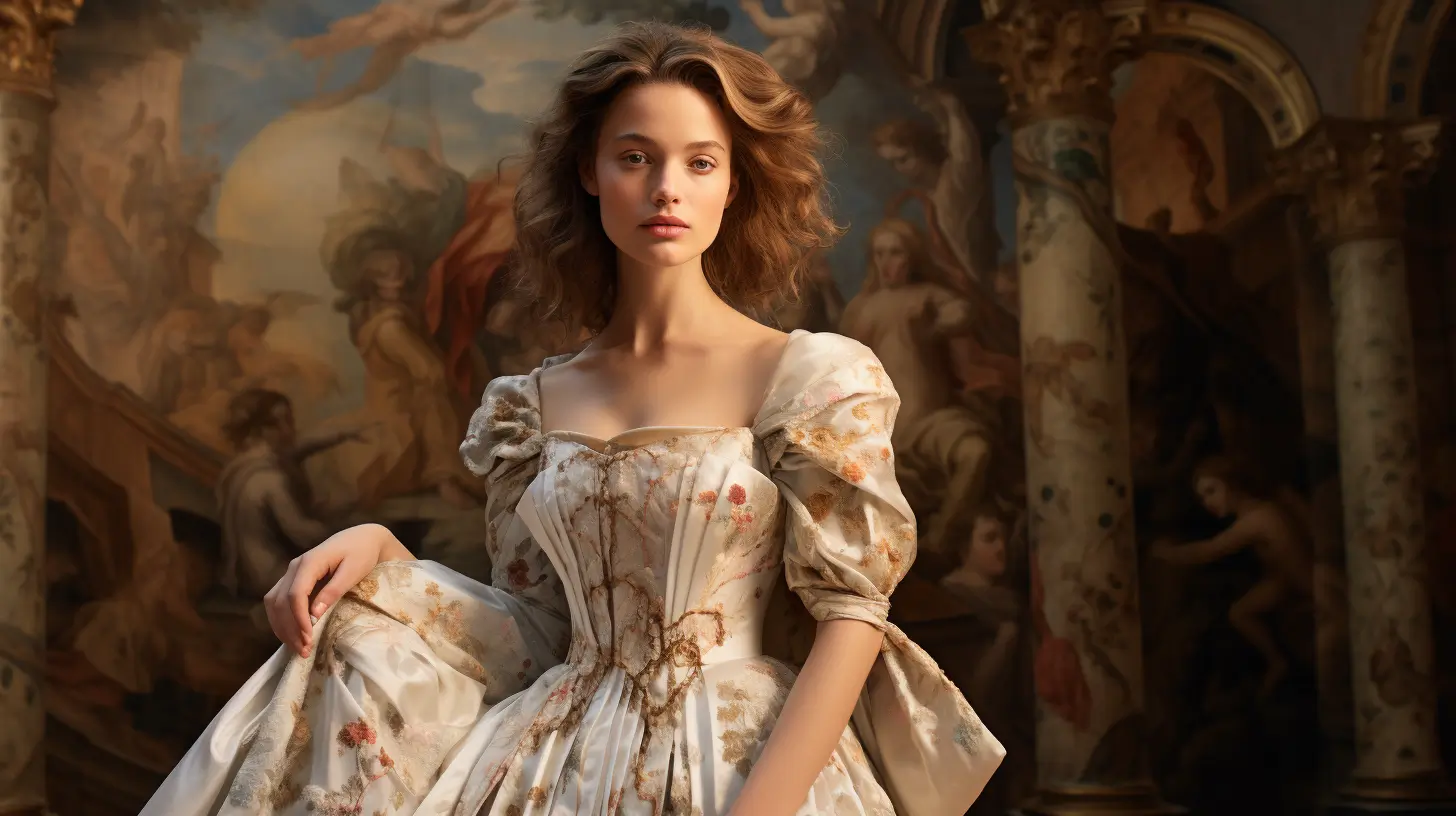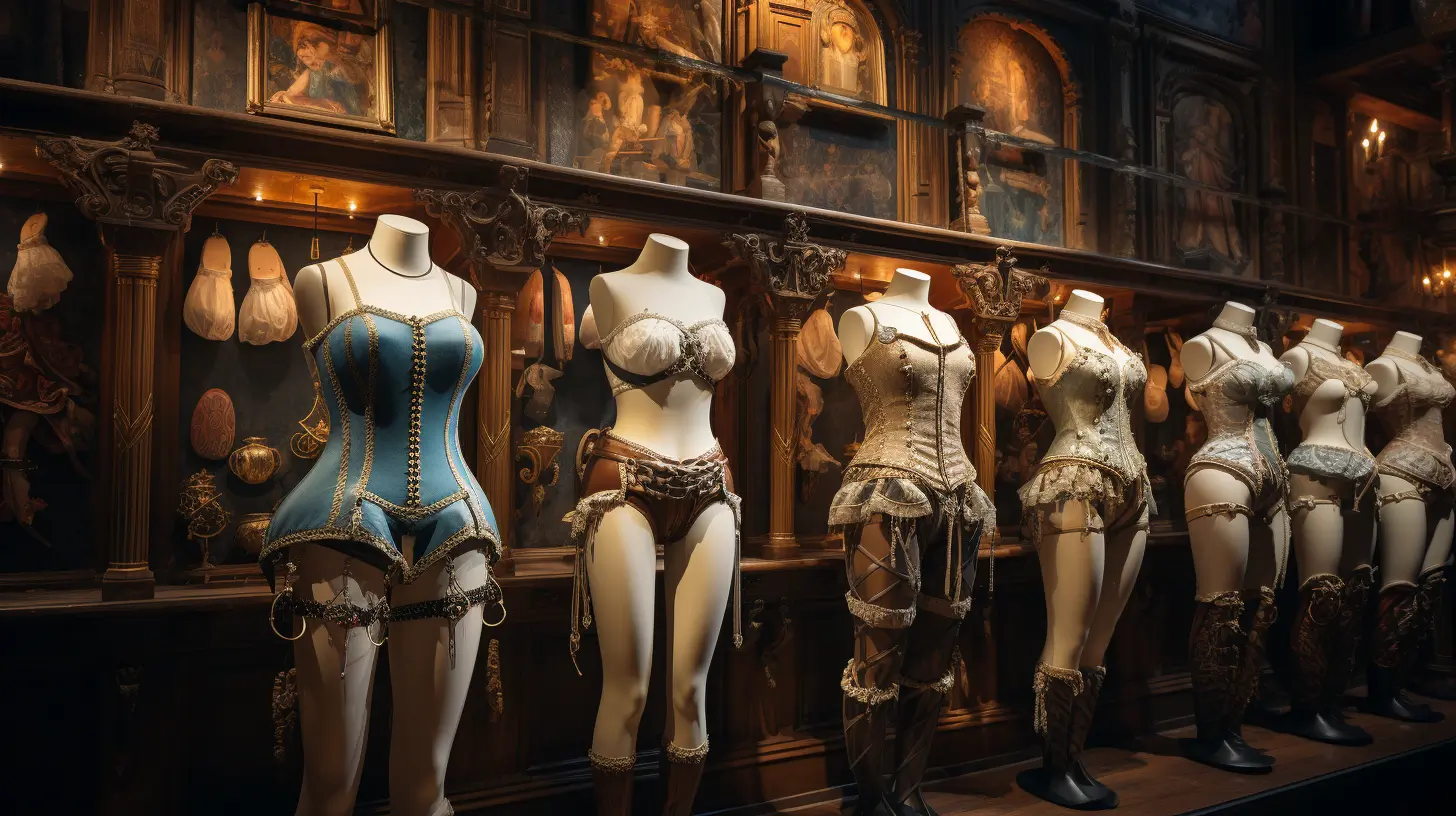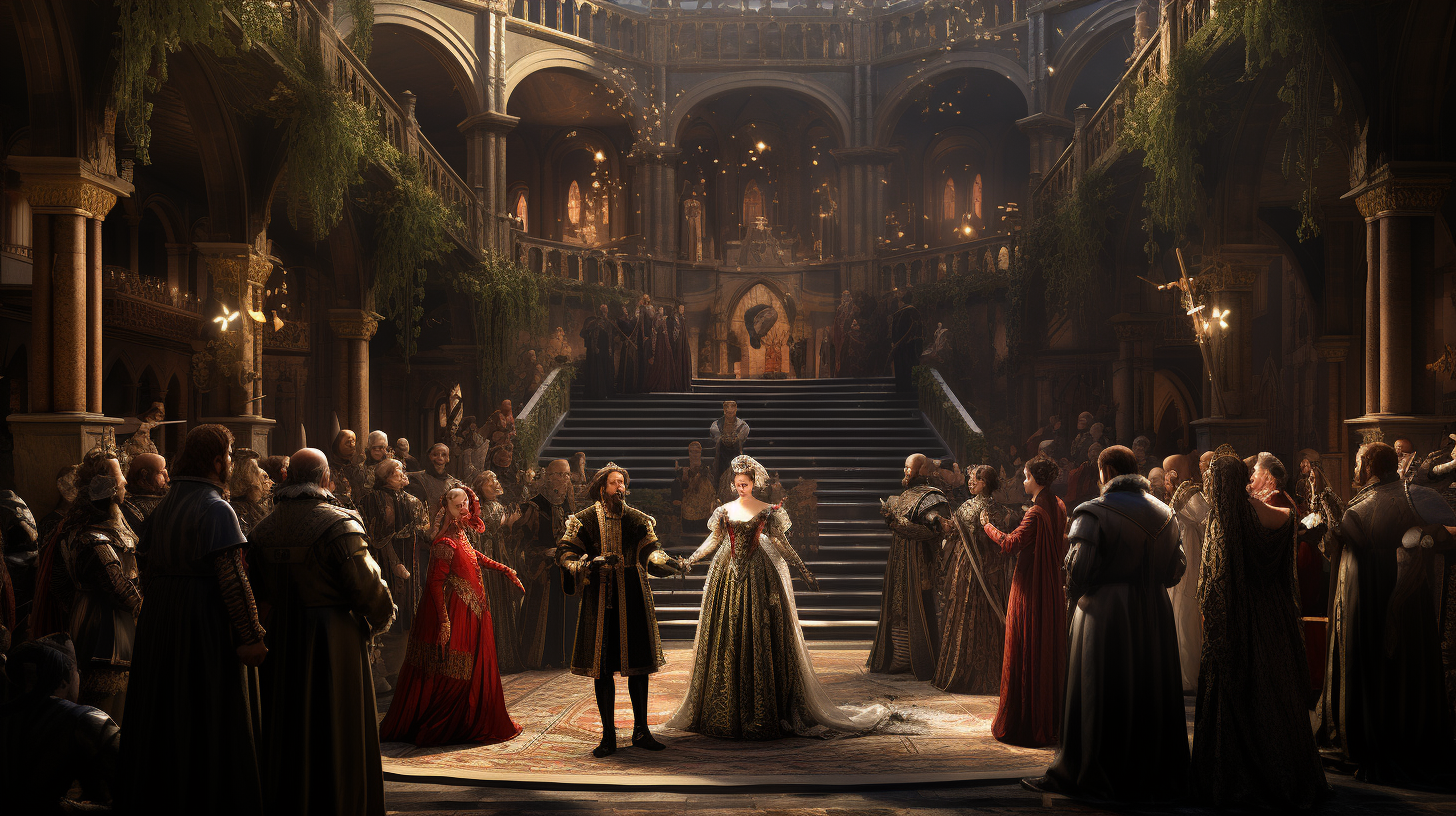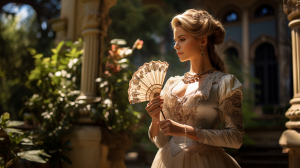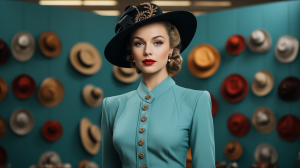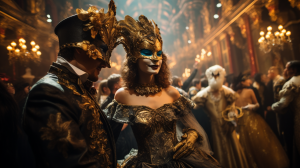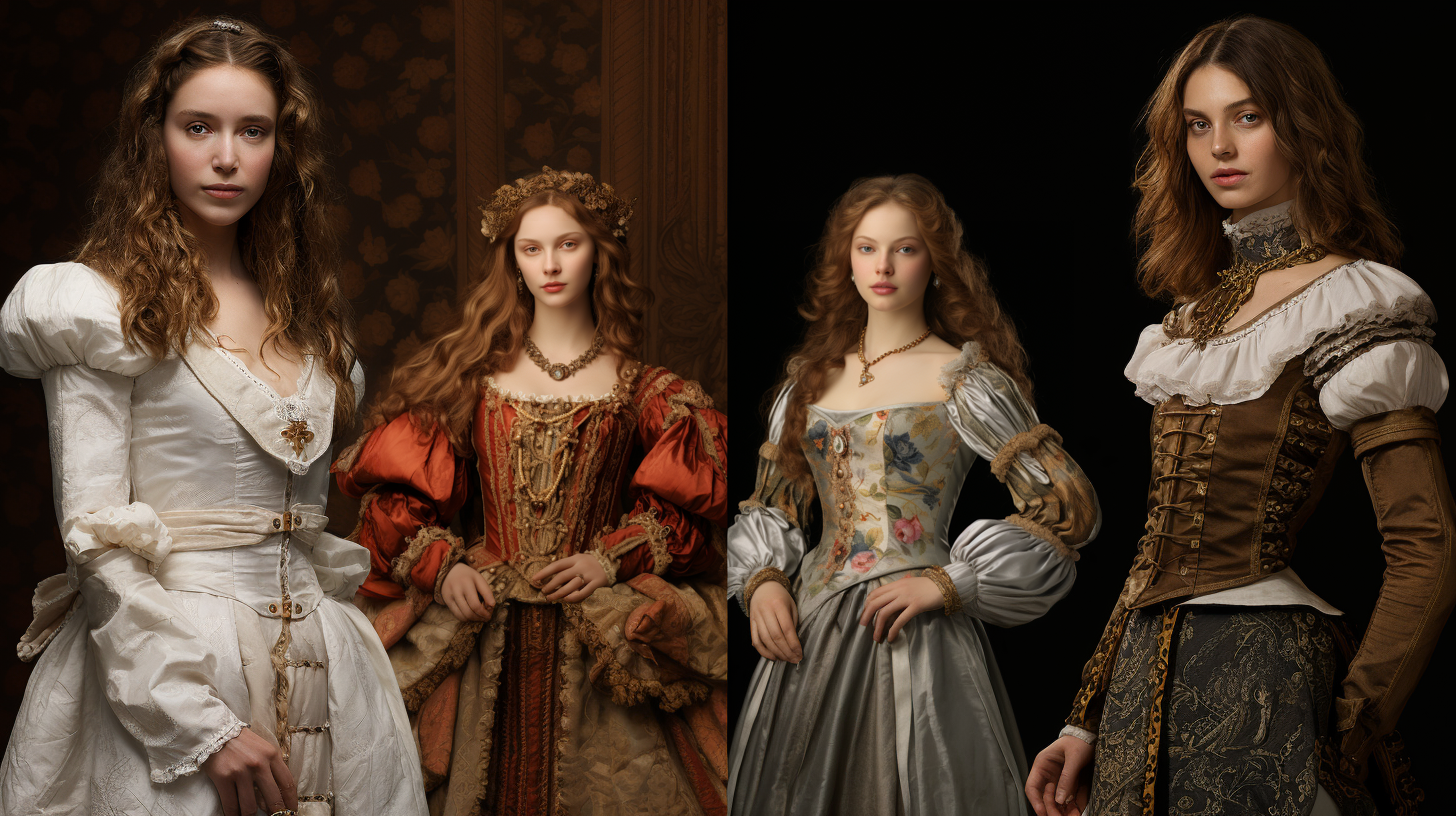
🌟 Unveiling the Renaissance’s Hidden Treasures: Eccentric Accessories 🌟
Howdy, fellow time travelers of fashion history! 🕰️ Step right into the grand tapestry of the Renaissance, a mesmerizing era where art, culture, and clothing merged in a kaleidoscope of magnificence. Today, we embark on a captivating journey through the annals of time to uncover the enigmatic world of Renaissance Accessories. Buckle up your fashion belts, as we delve into the eccentric allure of ruffled collars and feathered caps in this exquisite era.
The Renaissance, often hailed as a rebirth, was a pivotal period stretching from the 14th to the 17th century. It was a time when the human spirit soared, birthing remarkable artistic and intellectual achievements. But here’s the thing, fashion didn’t stand idly by—it evolved as a living canvas reflecting the cultural, social, and artistic nuances of the time. The term “Renaissance Accessories” isn’t just about embellishments; it’s an enchanting journey into the heart of a bygone age, where style was an intricate tapestry of self-expression.
Now, let’s set the stage. Imagine the bustling streets of Florence, the grandeur of the Tudor courts, and the extravagance of the French royal court—all brought to life through the lens of fashion. 🌍👑
In this meticulously researched blog, we’re going to turn back the sands of time to reveal the mysteries of ruffled collars and feathered caps. We’ll uncover how these seemingly whimsical adornments held profound cultural and social significance, adorning both the elite and common folk. 🧵🎩
So, fasten your cravats and adjust your plumes because we’re about to immerse ourselves in an era where fashion was not just fabric and thread; it was a statement of art, culture, and identity. Renaissance Accessories—it’s more than just clothing; it’s an artistic revelation! 💫
🌟 Unveiling the Renaissance’s Hidden Treasures: Eccentric Accessories 🌟
Greetings, dear time travelers of fashion history! 🕰️ Today, we embark on a most enchanting voyage, a sojourn back to a time when art, culture, and attire danced together in perfect harmony. We shall set our course through the annals of history to uncover the captivating world of Renaissance Accessories.
Picture this: The Renaissance, a wondrous epoch spanning the 14th to the 17th century, is like a fine tapestry woven with threads of innovation and artistic brilliance. Within this rich fabric of time, fashion wasn’t just a means of dress; it was a canvas for the soul, a mirror reflecting the essence of the age.
In the quiet streets of Florence or the opulent courts of Tudor monarchs, fashion became a vibrant symphony of expression. 🌍👑
This blog, a labor of love and meticulous research, shall be our trusty time machine. With ruffled collars and feathered caps as our guiding stars, we will unravel the tales they spun, the culture they whispered, and the society they adorned. 🧵🎩
So, fasten your period-specific garments and prepare to be transported to an era where fashion was not merely attire but a language. Renaissance Accessories—it’s a journey into a world where every thread tells a story, and every adornment, a revelation! 💫
🌟 The Renaissance’s Enigmatic Backdrop: Historical Context 🌟
Now, let’s take a moment to set the stage for our journey into the world of Renaissance Accessories by understanding the historical context that gave birth to this splendid era.
The Renaissance: A term that conjures images of artistic brilliance, intellectual awakening, and cultural rebirth. This epoch, spanning roughly from the 14th to the 17th century, was a time of profound transformation in Europe and beyond. 🏰🌍
The Renaissance Unveiled:
In the midst of the Middle Ages, a new dawn emerged—a period of enlightenment, exploration, and innovation. Scholars pored over ancient texts, artists breathed life into their canvases, and thinkers dared to question the status quo. It was a time of rediscovery, where classical knowledge was embraced once more, and humanity began to believe in its limitless potential.
Fashion as a Mirror:
Now, picture the fashion landscape against this backdrop. The Renaissance wasn’t just about newfound knowledge; it was a reawakening of aesthetics. Clothing became a canvas for artistic expression. Sumptuous fabrics, intricate embroidery, and a kaleidoscope of colors adorned both the elite and commoners. 🎨✨
Submerging into Subcategories:
Let’s break down our understanding further:
- Renaissance Society: Delve into the societal structure of the time. From royalty to the burgeoning merchant class, everyone had a unique role in fashion’s evolution.
- The Impact of Art: Explore how the great artists like Leonardo da Vinci and Michelangelo influenced clothing and style.
- Global Renaissance: Highlight how this cultural phenomenon spread beyond Europe, impacting fashion in different parts of the world.
Now, as you, dear readers, soak in this historical context, envision the bustling streets of Florence, the grandeur of the courts, and the whispers of intrigue in the air. Renaissance Accessories did not exist in isolation but were a vital part of this remarkable narrative.
🌟 The Tapestry of Renaissance Fashion 🌟
As we journey deeper into the heart of the Renaissance, let’s unveil the intricate tapestry of fashion during this captivating era. It’s not just about what people wore; it’s a glimpse into their souls, a canvas for artistic expression, and a reflection of society’s evolving values.
General Overview: Renaissance Fashion
In this vibrant era, clothing was more than mere attire; it was a statement. Imagine walking down the cobblestone streets, and each person you pass tells a unique story through their garments. The richness of fabrics, the attention to detail, and the elegance in every stitch made Renaissance fashion a sensory delight.
The Role of Accessories in Renaissance Attire
Here, we introduce the stars of our journey: ruffled collars and feathered caps. But they were not just accessories; they were pieces of art that adorned both men and women. Let’s delve deeper into their significance and evolution.
- Ruffled Collars: These were no ordinary collars. They were intricate frills that framed the face, made from luxurious fabrics. Imagine a place holder image here—a finely detailed illustration showcasing the various styles of ruffled collars, from delicate lace to opulent silk.
- Feathered Caps: Picture a feathered cap that’s a crown of artistry. Each plume carefully selected, the cap itself a work of craftsmanship. Place a placeholder image here—a vivid depiction of a feathered cap, resplendent with feathers of varying colors and sizes.
A Fashion Renaissance Across the Globe
Fashion didn’t respect borders during the Renaissance. It transcended them. The influence of this era rippled across Europe and beyond. Different regions embraced their unique interpretations of Renaissance fashion, adding more layers to this already intricate tapestry.
Now, as you immerse yourself in the vibrant hues, the sumptuous fabrics, and the intricate details, remember that fashion during the Renaissance was not just clothing; it was a living, breathing piece of art, and the wearers were the artists.
🌟 Ruffled Collars: Neckwear Extravaganza 🌟
In this section, we’ll unfurl the resplendent world of ruffled collars—a neckwear extravaganza that defined the Renaissance aesthetic.
Overview of Ruffled Collars
Step into a world where collars were not just utilitarian but works of art. Ruffled collars, also known as “millstone collars,” were the epitome of extravagance. Imagine a place holder image here—an intricate lace collar, delicately adorned with ruffles, accentuating the neckline.
Materials Used
These collars were crafted from the finest materials of the time. Think luxurious silk, intricate lace, and even the occasional inclusion of precious metals. Imagine a place holder image here—a close-up of a ruffled collar showcasing the opulence of the fabric.
Styles and Variations
Ruffled collars came in a myriad of styles and shapes. There were the delicate “whisk” collars that framed the face like a delicate halo, and the grand “cartwheel” collars that extended far and wide. Imagine a place holder image here—a visual representation of different collar styles, showcasing their unique characteristics.
Role and Significance
But why were these collars so significant? They were not just decorative; they were a reflection of social status, wealth, and personal taste. Imagine a place holder image here—a historical painting depicting a noble figure adorned in an elaborate ruffled collar, standing as a symbol of their status.
Now, as we immerse ourselves in the world of ruffled collars, envision the elegance they added to Renaissance fashion. These were not just accessories; they were statements, each ruffle a brushstroke in the portrait of the wearer.
🌟 Feathered Caps: Headwear with Flair 🌟
Now, let’s step into the world of feathered caps—a headwear with flair that graced the heads of Renaissance individuals and added a touch of grandeur to their attire.
The History and Development of Feathered Caps
Imagine a time when caps were not just functional but an expression of artistry. Feathered caps were the crown jewel of Renaissance headwear, and they emerged as a testament to the era’s fascination with extravagance. Picture a place holder image here—an exquisite feathered cap, adorned with vibrant plumes, capturing the essence of the Renaissance.
Varieties of Feathered Caps
Feathered caps came in a variety of styles and designs, each with its unique charm. From the majestic “Plume Royale” to the playful “Folly Feathers,” these caps allowed wearers to convey their individuality and social standing. Imagine a place holder image here—a visual montage of different feathered cap styles, showcasing their diversity.
Types of Feathers Used
Feathers played a pivotal role in defining the elegance of these caps. The choice of feathers, whether exotic or local, added depth and character to the headwear. Imagine a place holder image here—a close-up of various feathers commonly used in crafting these caps, highlighting their textures and colors.
Wearing and Styling Feathered Caps
But how were these feathered marvels worn? Understanding the art of wearing and styling a feathered cap is key to appreciating their significance. Picture a place holder image here—an illustration depicting the proper way to wear and position a feathered cap, showcasing the wearer’s grace and poise.
Social and Cultural Significance
Feathered caps were not just fashion statements; they were symbols of prestige and a reflection of one’s identity. They adorned the heads of nobles, courtesans, and even artists, each cap telling a unique story of the person who wore it. Imagine a place holder image here—a historical painting featuring a prominent figure adorned in a resplendent feathered cap, symbolizing their status and personality.
As you delve into the world of feathered caps, let your imagination take flight. These headpieces were not just accessories; they were plumes of creativity and a testament to the Renaissance’s extravagant spirit.
🌟 Other Eccentric Accessories 🌟
Our exploration of Renaissance fashion wouldn’t be complete without acknowledging the eclectic world of accessories beyond ruffled collars and feathered caps. In this section, we’ll open the treasure trove of unique adornments that added a touch of whimsy and sophistication to Renaissance attire.
Broadening the Horizons: Other Eccentric Accessories
Imagine strolling through the vibrant streets of Renaissance cities, where fashion was a language and accessories were its words. In addition to collars and caps, the people of this era embraced a diverse range of accessories that spoke volumes about their taste, status, and cultural influences.
Gloves and Handwear
Picture a pair of gloves, not just for warmth but as a canvas for intricate embroidery. These gloves were not mere coverings for the hands but expressions of artistry. Place a placeholder image here—an illustration showcasing a beautifully embroidered pair of Renaissance gloves.
Fans and Parasols
Envision the graceful movement of a hand-held fan, a subtle language of communication. Fans weren’t just tools for staying cool; they were instruments of expression and flirtation. Imagine a place holder image here—a depiction of a Renaissance fan, adorned with delicate designs and carried with elegance.
Shoes and Footwear
Footwear during the Renaissance was far from ordinary. Shoes were crafted with precision and embellished with intricate details. From pointed toes to embellished heels, every step was a statement. Picture a place holder image here—a visual representation of Renaissance footwear, highlighting their unique features.
The Artistry Behind Accessories
While exploring these accessories, it’s important to appreciate the craftsmanship that went into their creation. Skilled artisans poured their talent into every piece, transforming them into works of art. Imagine a place holder image here—a glimpse into the workshop of a Renaissance artisan, meticulously crafting an accessory.
As we delve into these eccentric accessories, remember that they weren’t just embellishments; they were storytellers, each accessory narrating a unique chapter in the grand tale of Renaissance fashion.
🌟 Cultural Significance: Fashion as a Reflection of Society 🌟
In this section, we’ll dive deep into the cultural significance of Renaissance fashion and how clothing choices during this period were inextricably linked to the evolving values and societal shifts of the time.
Fashion as a Mirror of Society
Imagine, if you will, that fashion is a mirror, reflecting the hopes, dreams, and aspirations of an era. In the Renaissance, clothing was more than just a way to keep warm—it was a powerful tool for self-expression, identity, and social commentary.
Class Distinctions and Dress Codes
Picture the social hierarchy of the time, from the nobility to the commoners. Each stratum had its distinct dress code, and clothing was a visible marker of one’s place in society. Envision a placeholder image here—a Renaissance painting depicting individuals from different social classes, each adorned in attire that signifies their status.
Changing Values and Morality
The Renaissance was a time of intellectual awakening, and with it came a shift in societal values. Art and fashion became intertwined, with clothing often used to express one’s moral and philosophical beliefs. Imagine a placeholder image here—a historical artwork portraying a person in attire that reflects their intellectual pursuits and values.
Influence of Art and Literature
Consider the works of great Renaissance artists and writers. They not only shaped the cultural landscape but also influenced fashion. Artistic motifs found their way into clothing designs, making fashion a canvas for artistic expression. Picture a placeholder image here—an example of a Renaissance painting and a corresponding fashion piece inspired by the artwork.
Rebellion and Expression
The Renaissance wasn’t just about conformity; it was also a time of rebellion and individualism. Some used clothing as a form of protest or a means to stand out from the crowd. Think of this as a symbol of personal freedom. Imagine a placeholder image here—an illustration showcasing an individual who defied societal norms through their fashion choices.
As we navigate the intricate tapestry of Renaissance fashion, let’s remember that every garment, accessory, and embellishment was a thread in the larger narrative of a society in transformation.
🌟 Craftsmanship and Artistry: The Soul of Renaissance Fashion 🌟
In this section, we embark on a journey to uncover the true essence of Renaissance fashion—the craftsmanship and artistry that breathed life into each garment and accessory.
The Craftsmen Behind the Scenes
Close your eyes for a moment and envision a bustling workshop, filled with skilled artisans meticulously crafting clothing and accessories. In the Renaissance, these craftsmen were the unsung heroes, transforming raw materials into works of art.
Tailoring: A Precise Art
Imagine a tailor’s workshop, where every stitch was a testament to their skill. The precision in tailoring during this era was unparalleled. From the opulent gowns of nobles to the finely cut suits of the elite, every garment was a masterpiece. Picture a placeholder image here—a tailor at work, crafting a Renaissance gown with impeccable precision.
Embroidery and Embellishments
The artistry extended to the embellishments that adorned clothing. Exquisite embroidery, intricate beadwork, and delicate lacework were all common elements. These embellishments were not just decorations; they were expressions of creativity. Imagine a placeholder image here—an up-close view of intricate embroidery on a Renaissance garment, showcasing the level of detail.
The Influence of Art in Fashion
Art and fashion were intertwined during the Renaissance. Painters, sculptors, and designers often collaborated, resulting in clothing that resembled living artworks. Envision a placeholder image here—a side-by-side comparison of a Renaissance painting and the fashion piece it inspired, highlighting the artistic influence.
Materials of Distinction
Consider the luxurious fabrics of the time—silks, velvets, brocades, and more. These materials were carefully selected to convey wealth and elegance. The touch and feel of these fabrics were sensory delights. Imagine a placeholder image here—a swatch of rich Renaissance fabric, showcasing its texture and opulence.
As you journey through the world of Renaissance craftsmanship and artistry, remember that each garment was not just a piece of clothing; it was a testament to human creativity and dedication.
🌟 Trendspotting: Past and Present 🌟
In this final section, we embark on a journey to explore how fashion trends from the Renaissance continue to influence our contemporary world. The threads of history are woven into the fabric of today’s style, and recognizing these connections is like peering through a time-traveling looking glass.
The Timeless Appeal of Renaissance Fashion
Imagine a world where the elegance of the Renaissance is not confined to history books but lives on in our clothing choices. Some elements of Renaissance fashion have transcended time and remain relevant today. Picture a placeholder image here—a modern fashion ensemble inspired by Renaissance aesthetics, blending the old with the new.
Fashion as a Continuum
Fashion is a river that flows through time, carrying with it the echoes of the past. The Renaissance was a period of creativity, innovation, and self-expression. These qualities continue to shape the way we dress and adorn ourselves today. Imagine a placeholder image here—a visual representation of a seamless transition from Renaissance fashion to contemporary styles.
Incorporating Renaissance Flair
Consider the resurgence of ruffled collars, lace, and opulent fabrics in modern fashion. Designers and fashion enthusiasts draw inspiration from the past to create new and exciting looks. Envision a placeholder image here—an example of a modern runway showcasing a collection that pays homage to Renaissance fashion.
The Enduring Influence of Art
Artistic motifs that graced Renaissance garments find their way onto today’s clothing and accessories. Whether it’s a floral pattern or a classical painting-inspired print, art continues to be a driving force in fashion. Imagine a placeholder image here—a side-by-side comparison of a Renaissance artwork and a contemporary fashion piece featuring a similar design.
Fashion’s Timeless Evolution
As we conclude our journey through the annals of fashion history, remember that the past is not separate from the present; it’s an integral part of our fashion story. Trends may come and go, but the influence of the Renaissance endures, a testament to the enduring power of style and self-expression.
🍽️ Conclusion: Savoring the Flavor of Renaissance Fashion 🍽️
As we reach the end of our sumptuous journey through the eccentric accessories of the Renaissance, it’s time to savor the flavors and reflections we’ve gathered along the way. Each section, from our initial exploration of ruffled collars and feathered caps to our venture into cultural significance, craftsmanship, and trendspotting, has offered a unique dish in this grand feast of fashion history.
The Legacy of Ruffled Collars and Feathered Caps
We began our adventure by delving into the quirkiest accessories of the Renaissance, the ruffled collars, and feathered caps. These adornments, once symbols of elegance and social status, now stand as reminders of the fashion-forward thinking of the past.
Cultural Significance: Fashion as a Mirror of Society
Our exploration of the cultural significance of Renaissance fashion transported us to an era where clothing was a canvas for societal values and personal beliefs. It was a journey into the heart of a society in transformation, where attire spoke louder than words.
Craftsmanship and Artistry: The Soul of Renaissance Fashion
In the section on craftsmanship and artistry, we marveled at the skill and dedication of Renaissance artisans who transformed fabrics into works of art. From precise tailoring to exquisite embellishments, their craftsmanship left an indelible mark on fashion history.
Trendspotting: Past and Present
In our final leg of the journey, we navigated the time-space continuum to observe how trends from the Renaissance continue to influence our modern fashion landscape. Like a fine wine, some elements of Renaissance fashion have only improved with age.
So, dear readers, our table is now set with a feast of knowledge and inspiration. As we bid adieu to the Renaissance and its eccentric accessories, let’s remember that fashion is not just about clothes; it’s a reflection of the human spirit, creativity, and the ever-evolving tapestry of history.
End of Blog Post


